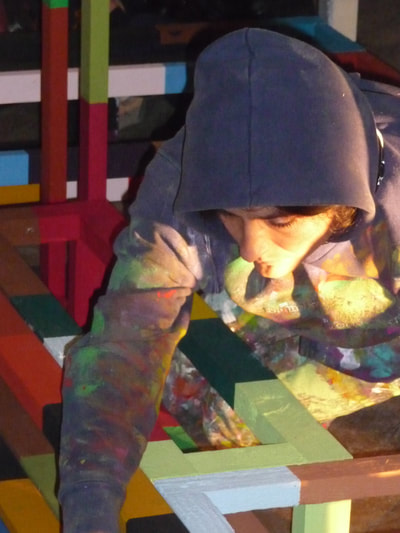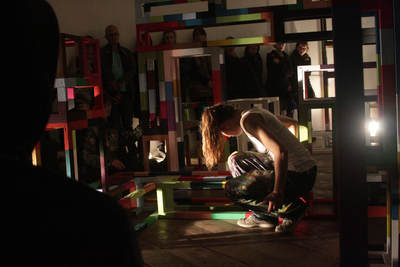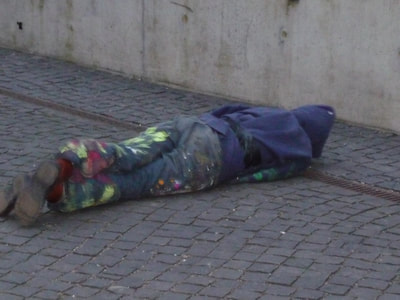VERNETZUNGS - & AUSTAUSCHPROJEKTE
Velada Santa Lucia in Maracaibo/ Venezuela (2012)
Each year the colorful rousing art festival “Velada Santa Lucía” brings ten thousand of people from all over Venezuela and the world to a small street in a working class neighborhood in Maracaibo. The festival which bursts all cultural and societal limits, was founded in 2001 by the Hamburg based Venezuelan artist Clemencia Labin, who was invited with her fascinating concept to the Venice Biennale in 2011. During the Velada hundreds of artists from different countries display their art in the houses of the inhabitants of the quarter around the Santa Lucía church. During these days the whole neighborhood is turned upside down and the inhabitants do not just offer any room - they open their state parlor, the center of family life, including sectionals, Madonna shrines, private family pictures and plastic flower arrangements to the artists and the public. By donating their living-rooms while continuing with their daily life in the houses unique interactions evolve. The Velada is a vivid platform afar from lifeless museums and galleries. The documentary accompanies Clemencia Labin, the inhabitants and the artists before, during and after the Velada Santa Lucía 2012.
Tanz in den Gängen (2011/2012)
„Tanz in den Gängen“ ist ein kollektives Projekt, das Künstler*innen unterschiedlicher Sparten einlud, sich mit dem öffentlichen Raum des Gängeviertels auseinanderzusetzen. Dabei dient das Hamburger Gängeviertel als Plattform sowie Aufführungsort und ist integrativer Bestandteil des Projektes.
Im Juli 2011 startete die erste Runde „Tanz in den Gängen". Dabei entstanden 9 Performances und 2 Videoproduktionen, die an unterschiedlichen und ungewöhnlichen Orten des Gängeviertels in Form eines Parcours präsentiert wurden.
Im Juli 2012 wurde das Projekt „Tanz in den Gängen“ zum zweiten Mal realisiert. In dem einwöchigen Prozess kamen rund 30 ChoreographInnen und KünstlerInnen aus dem deutschen Raum und dem Ausland nach Hamburg. Von Montag bis Freitag gab es Workshops und Trainings, in denen die Teilnehmer ihr Wissen und ihre Arbeitsweisen austauschen konnten. Daneben entstanden in gemeinsamen Prozessen Arbeiten, die am Ende der Woche in den Räumlichkeiten und öffentlichen Flächen des Hamburger Gängeviertels in Form eines Parcours präsentiert wurden. Es entstanden 9 Performances, 3 Videoproduktionen und zwei Ausstellungen.






